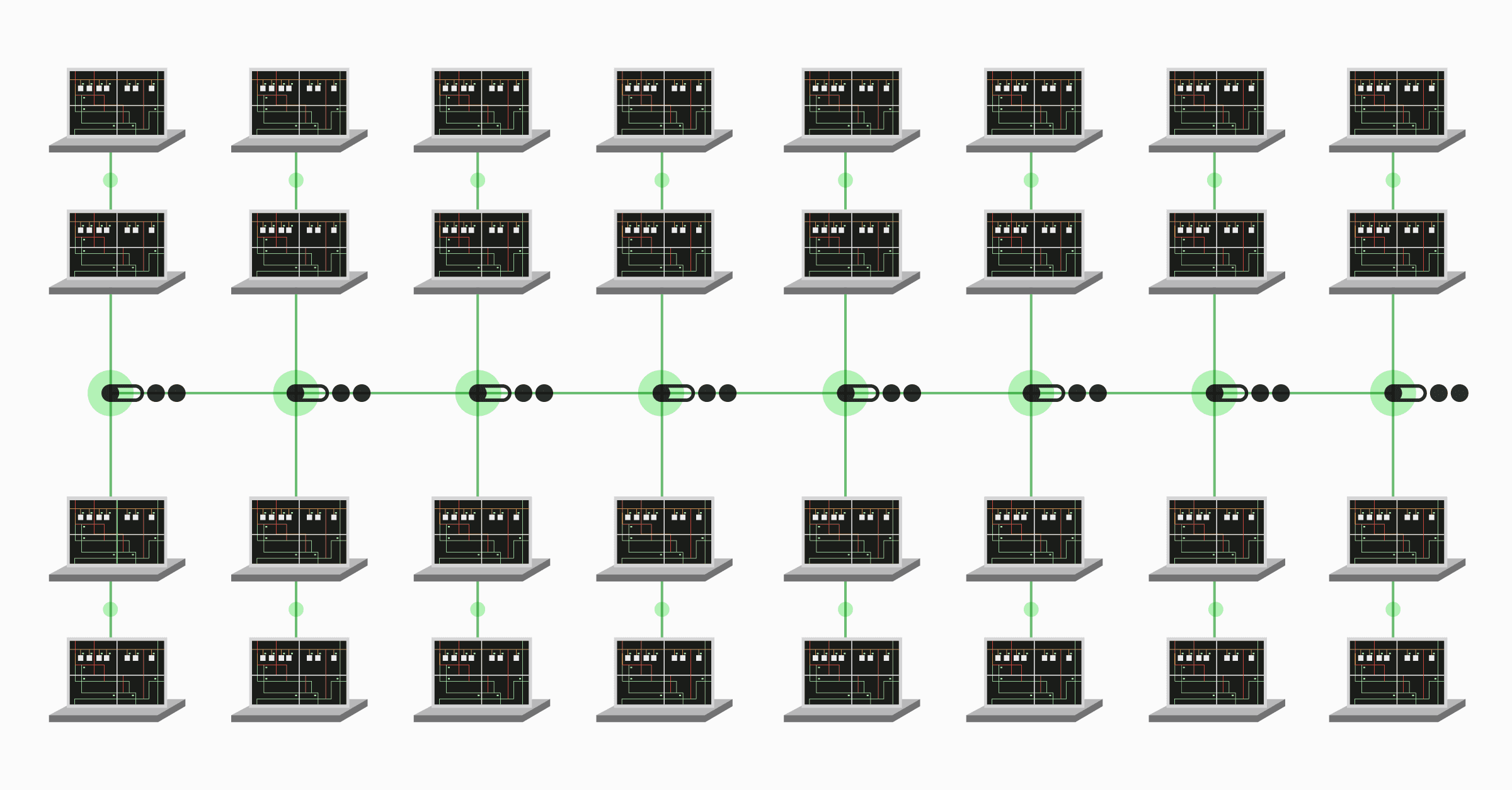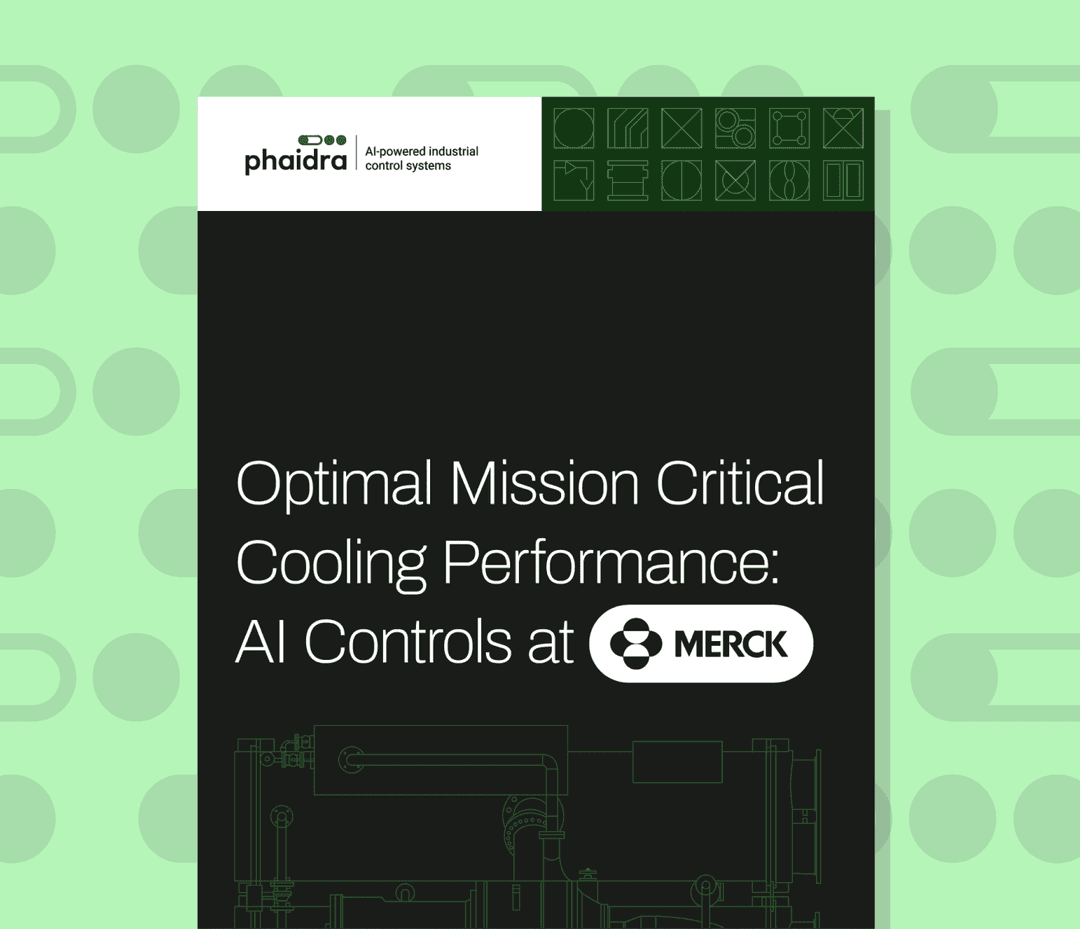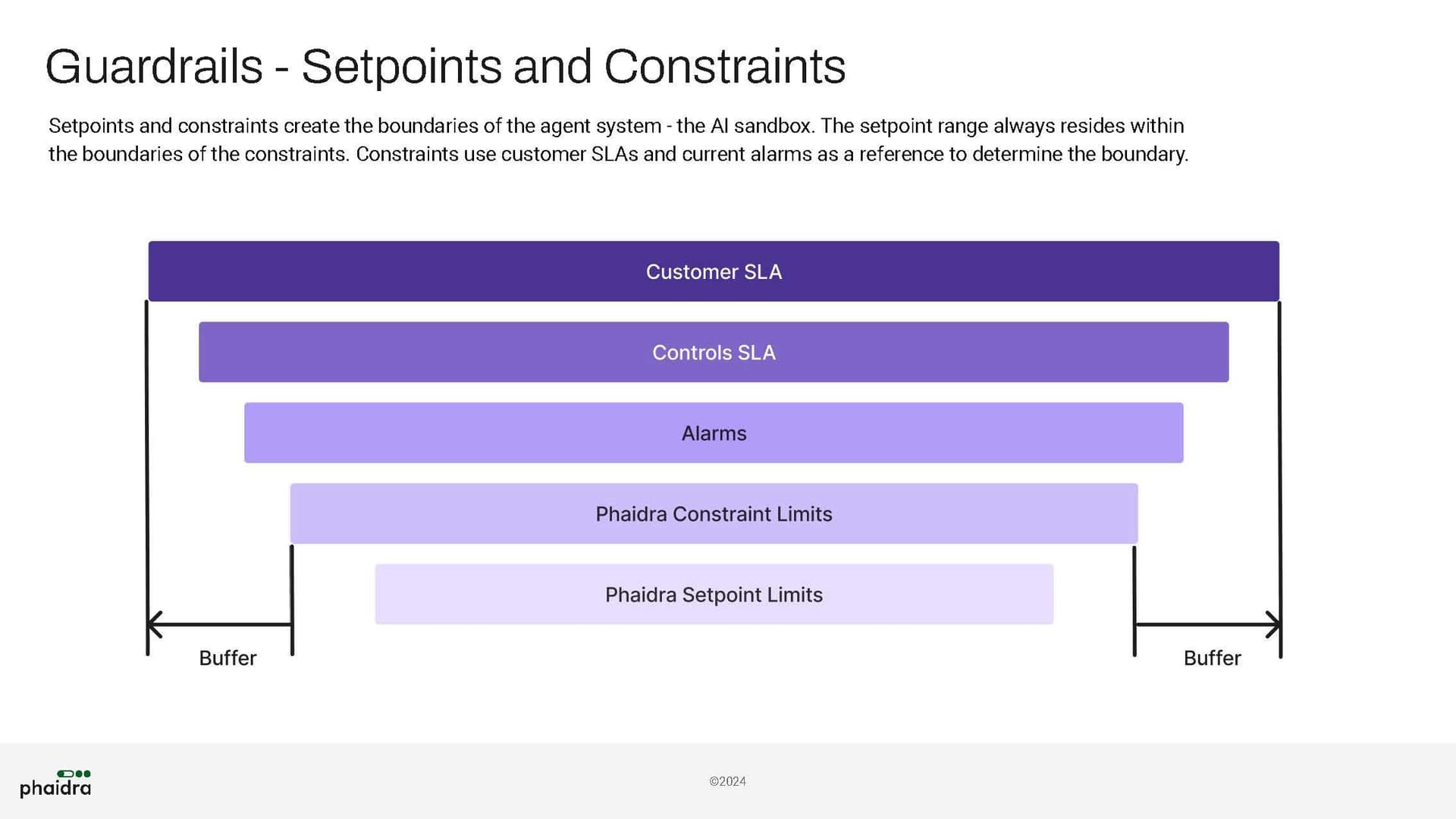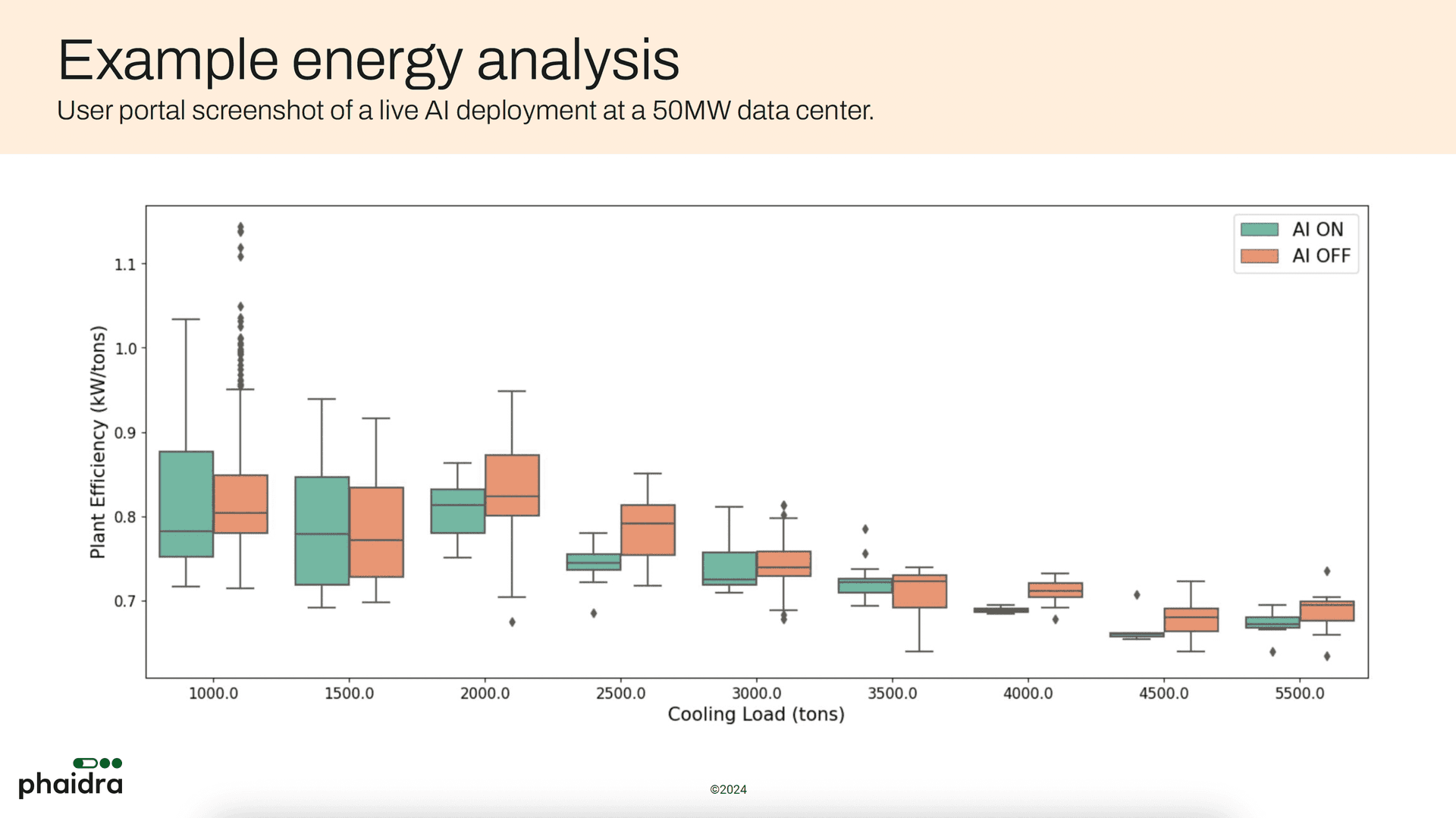Cookie Settings
We use cookies to operate this website, improve usability, personalize your experience and improve our marketing. Your privacy is important to us. Privacy Policy.
July 24, 202410 min read
Virtual Plant Operator Technology: The Next-Generation of Industrial Control

Share
The need for rapid improvement in the efficiency and productivity of industrial assets is the point where sustainability and good business meet.
Currently, many industrial processes are still overly inefficient and wasteful, making optimal safety and productivity more critical than ever. Advanced tech integrations are emerging that can radically change how we manage, control and optimize industrial environments. These technological advancements will shift design and construction practices as the need for over-redundancy subsides with precision and dynamic optimized control improvement.
Artificial Intelligence (AI) powers the next-generation of industrial controls, transforming safety protocols and operational efficiency in mission-critical facilities. Modern software practices for industrial controls offer a comprehensive, system-level approach to safety and productivity. They address the complexities of today’s industrial operations by integrating functional safety measures, mitigating risks from system malfunctions, and optimizing operational performance. This ensures facilities run with precise stability and peak efficiency.
In this article, you will learn more about:
How artificial intelligence (AI) transforms safety protocols and operational efficiency in industrial controls.
The core components of next gen industrial controls and their benefits.
The importance of safety mechanisms and user-friendly interfaces in industrial automation.
Understanding Next-Generation Industrial Controls
Next-generation industrial controls are advanced systems designed to enhance the safety and efficiency of complex system operations without direct human operator interaction or the need for regularly scheduled re-programming. These systems use cutting-edge technologies like AI, machine learning, and advanced sensors to autonomously manage and optimize complex industrial processes.
Although these controls operate independently, operators remain an integral part of the system. They provide feedback and long term strategies for the business as inputs for the AI agents. They also provide nuanced operator knowledge of the site and the historical sequence of operation practices that may not be well documented and represent the tribal knowledge that can be the basis for adaptive controls. This blend of human oversight, institutional knowledge and AI-driven automation provides a robust and reliable framework for industrial operations.
The core components of next-gen industrial controls include:
AI and Machine Learning Algorithms: Analyze data in real-time to optimize operations, predict potential issues before they occur and forecast the appropriate control setpoint changes based on near-future environmental changes.
Advanced Sensors, IoT Devices and Data Historian: Collect and store vast amounts of telemetry data from various parts of the industrial environment, providing a comprehensive view of the system’s status.
Human-Machine Interfaces (HMIs): Intuitive interfaces that allow operators to interact with the control system easily and better understand past actions, future predictions and real time impacts on system-level efficiency and productivity.
Redundant Control Architectures: Systems will still have a programmed SOO to act as a worst-case scenario operation and fall-back position.
Integrated Functional Safety Measures: Protocols and mechanisms that ensure the system operates safely, while still providing flexibility to find opportunities for energy efficiency gain and adapt to ever changing weather, load, and machine conditions.
Importance of Safety and Productivity
Safety and productivity are the cornerstones of any industrial operation, especially in mission-critical facilities where any downtime or failure can have significant consequences. They’re vital to ensuring operational continuity, preventing accidents and failures, optimizing performance, ensuring compliance, and improving reliability.
Mission-critical facilities, such as data centers, power plants, and manufacturing units, require uninterrupted operations. Therefore, they need industrial controls that ensure operational continuity. Any disruption can lead to substantial financial losses, safety hazards and equipment failure or destruction.
Functional safety measures prevent system malfunctions, equipment failures, and human errors—reducing the risk of accidents and failures and enhancing overall safety. Next-gen industrial controls leverage AI and advanced analytics to optimize performance. AI controls are needed to optimize resource usage, energy consumption, and operational efficiency. This results in cost savings and improved productivity.
Ensuring Compliance and Reliability
Industries must adhere to safety standards and regulations. Next gen controls help ensure compliance by continuously monitoring and enforcing safety protocols. This goes hand-in-hand with reliable and efficient operations, building trust with stakeholders, and contributing to the long-term success of the facility.
Moreover, control systems leveraging AI for optimization must have accurate data as an input, thus requiring operations teams to improve data collection and storage practices, which can also improve organizational reporting accuracy.
In mission-critical facilities, the stakes are high and the margin for error is small. Next-generation industrial controls play a crucial role in ensuring these facilities operate at peak performance, maintaining the highest standards of safety and productivity.
By integrating advanced technologies and implementing comprehensive safety measures, next-gen industrial controls provide a robust framework for managing complex industrial operations. As we delve deeper into the specific mechanisms and strategies that underpin these systems, we will see how they transform industrial environments and set new benchmarks for operational excellence.

Autonomous AI Controls at Merck: Mission Critical Cooling Optimization
Case Study: Learn more about the journey to full autonomous AI control deployment and the impacts that Virtual Plant Operators are having at Merck's largest manufacturing site.
Safety Checks and Mechanisms
Ensuring the safety and reliability of next-gen industrial controls requires a comprehensive system of safety checks and mechanisms. These systems continuously monitor and maintain optimal operating conditions. This prevents potential failures and ensures uninterrupted, safe operation.
Several key safety checks ensure operational integrity. Global constraint compliance continuously monitors critical parameters like temperature and pressure, keeping these variables within safe limits to prevent equipment failure or hazardous situations.
Similarly, local equipment constraint compliance uses standard control frequencies to regularly check that equipment operates within specified parameters, ensuring each piece functions correctly and safely.
To maintain network integrity, connection loss monitoring continuously checks network connections to detect and address disruptions, preventing communication breakdowns that could compromise system safety. This keeps a ‘heartbeat’ of the system’s data connection.
Additionally, an operator override function provides a manual kill switch, allowing operators to take control instantly if necessary.
Phaidra’s infrastructure includes its own set of safety checks. These ensure the AI control system operates reliably and safely.
Regular checks for bad or stale data maintain data integrity by identifying anomalies such as high latency, outliers, and sensor drift. This is crucial for accurate AI decision-making.
Setpoint compliance ensures that AI-generated setpoints remain within allowable ranges, verifying that the AI’s actions do not push the system beyond safe operating limits.
Heartbeat signals continuously monitor connection loss, allowing the system to detect and respond quickly to any loss of connection.
Finally, Phaidra availability is continuously monitored, assessing system latency and platform availability to ensure reliable execution of control commands and prevent disruptions caused by internal system failures.
These safety checks ensure that both the local control systems and Phaidra’s AI infrastructure work together seamlessly to maintain a safe and efficient operational environment. By addressing both local and system-wide parameters, these mechanisms create a comprehensive safety net that enhances overall system reliability and performance.
Safe Operations
Ensuring safe operation requires setting clear boundaries and having robust fail-safes. These mechanisms maintain control and safety in mission-critical environments.
Guardrails are essential for defining the operational boundaries within which an AI system operates. These boundaries are established based on a combination of factors: customer service level agreements (SLAs), control SLAs, federal constraint limits, and available setpoint ranges.
Here’s how each element contributes to the guardrails:
Customer SLAs specify the performance and safety standards that the system must adhere to. They define the expectations for system reliability, uptime, and safety measures, ensuring that the AI controls meet the customer’s operational requirements.
Control SLAs detail the specific operational parameters and constraints for the control systems. They outline the acceptable ranges for various operational variables, such as temperature and pressure, ensuring that the system operates within safe limits.
Federal Constraint Limits are regulatory limits set by governing bodies to ensure safety and compliance with industry standards. They provide an additional layer of safety by setting maximum and minimum allowable values for key operational parameters.
Setpoint Ranges are the specific values within which the AI system can adjust the controls. Setpoints are determined based on both customer and control SLAs, ensuring that any adjustments made by the AI are within safe and acceptable limits.
By integrating these elements, the guardrails create a "sandbox" within which the AI system can operate safely and effectively. These constraints ensure that the AI optimizes performance without compromising safety.
Fail-safes are critical mechanisms that ensure the system can quickly revert to a safe state if any anomalies or failures are detected. These triggers help maintain control and safety, minimizing the risk of accidents or disruptions.
Key fail-safes include:
Sensor Drift: Continuous monitoring detects any deviation in sensor readings. If sensor drift is detected, the system triggers a transition back to local control to prevent inaccurate data from affecting operational decisions made by an AI.
Connection Loss: If the system detects a loss of network connection, it initiates an automatic failover to local control. This ensures that the system remains operational and safe even without AI oversight. If the AI does not have recent enough data it does not know the reality of the current situation well enough to make the best control decisions
Improperly Configured Constraints: The system continuously checks the configuration of constraints. If it detects any misconfigurations, it triggers a safe transition to local control to prevent potential operational hazards. This can also occur when operators have been changing control strategies manually due to practical experience. If there are constraints to the system that are not documented, they must be communicated so the AI’s ‘sandbox’ can be properly configured.
Cybersecurity Attack: Although cybersecurity is a separate topic, any detected breaches or threats trigger an immediate failover to ensure the system’s integrity and safety.

Figure 1 - How Phaidra sets constraint limits on the AI initially to prove stable control capability.
The "Guardrails - Setpoints and Constraints" image illustrates how these constraints create a safe operational boundary for the AI system. This visual representation helps to understand how the AI system operates within defined limits, ensuring both safety and efficiency.
By clearly defining guardrails and implementing robust fail-safes, next-gen industrial controls ensure a safe and reliable operational environment. These mechanisms provide a comprehensive framework that protects against potential failures and maintains optimal performance.
As operators become more comfortable with an autonomous AI control system, the over-constraints on that system can be loosened to more closely reflect real system hard boundaries, allowing the AI to explore more operational strategies and identify energy-saving opportunities. An AI system leveraging Reinforcement Learning is capable of this exploration, and for more information on how an AI system can explore without risking safety, there is more available here.
Advanced Safety Mechanisms
Next-gen industrial controls incorporate a system-level view, understanding the relationship between all connected pieces of equipment. Current operational paradigms focus on maximizing the efficiency of individual equipment, but next-generation controls should enable facilities to reach global energy efficiency gains. This comprehensive integration ensures that every component of the industrial operation works in harmony, enhancing overall safety and efficiency.
By monitoring and managing the entire system as a cohesive unit, potential issues can be identified and addressed more effectively, and exploitable energy trade-offs can be taken advantage of as long as they do not risk stable operation.
One benefit of a system-level approach is the ability to identify risks early. By continuously monitoring all aspects of the operation, these controls detect vulnerabilities arising from both functional failures and external threats. Early identification allows for proactive measures to mitigate risks before they escalate into serious problems.
Another benefit of autonomous AI control is earlier, more dynamic response to potential changes in internal and external environments. Much of the energy efficiency gains delivered by AI are not necessarily because the AI controls did something human operators never thought of. Instead, they make the same decisions human operators would make, but at the right moments and more consistently over a long period of time.
Next-gen industrial controls employ a combination of strategies to ensure safety and reliability. This includes evaluating the dangers posed by system malfunctions and implementing measures to prevent such occurrences. The controls also incorporate methods to thwart potential threats, ensuring the system remains secure from external disruptions.
To ensure that safety functions execute properly without compromise, next gen controls incorporate execution assurance mechanisms. These mechanisms verify that safety protocols are followed precisely and that any deviations are immediately corrected. This helps maintain the integrity of the safety functions, ensuring they perform as intended in all situations.
The advanced safety mechanisms are tightly integrated with the system’s safety checks and guardrails. This integration ensures that all safety protocols are consistently enforced, providing a robust defense against potential failures. By working together, these elements create a resilient safety net that enhances the system’s overall robustness.
By employing a comprehensive system-level approach, next-gen industrial controls provide a robust framework for ensuring safety and reliability while also allowing for enhanced energy efficiency. The integration of advanced safety mechanisms, early risk identification, combined strategies, and execution assurance creates a secure and efficient operational environment. These controls set new standards for functional safety in mission-critical facilities, showcasing the transformative potential of AI in industrial operations.
User-Friendly Interfaces
The success of next-gen industrial controls depends on both advanced technologies and the usability and preparedness of the workforce. User-friendly interfaces and comprehensive training programs are essential components in ensuring that these controls are effectively utilized and maintained.
Human-Machine Interfaces (HMIs) make next-gen industrial controls accessible and easy to use. Intuitive HMIs enhance usability by providing clear, straightforward interactions between the operator and the control system. Many would agree that the currently available and wide-spread HMIs are in need of improvement from a user experience perspective.
These next-gen interfaces should feature:
Simplified Navigation: Easy-to-understand menus and commands allow operators to quickly find and execute necessary functions.
Visual Indicators: Real-time visual feedback, such as color-coded alerts and status displays, helps operators easily monitor system performance and identify issues.
Touchscreen Controls: Modern touch screens with user-friendly graphics make it simple for operators to interact with the system, reducing the learning curve and increasing efficiency.
Exportable Datasets: Historical actions and sensor trends should be easy to export or analyze within the system.
By focusing on usability, intuitive HMIs help address workforce challenges, such as training new employees or dealing with high turnover rates. Operators can quickly become proficient with the system, leading to fewer errors and more effective control.
Effective training is crucial for ensuring that workers are prepared to operate and maintain next-generation industrial controls.
Comprehensive training programs should include:
Hands-On Training: Practical, hands-on sessions that allow workers to interact directly with the control systems. This helps them understand the system’s functionalities and how to respond to various scenarios.
Real-Time Logic Changes: Training that includes real-time logic changes, demonstrating how the system adapts to different conditions. This prepares workers to handle dynamic operational environments.
Online Configuration Updates: Regular updates and refresher courses delivered online, ensuring that workers stay informed about the latest system configurations and improvements.
These training programs boost worker preparedness by equipping them with the knowledge and skills needed to effectively use next-gen industrial controls. Workers become more confident in their abilities, leading to improved performance and safer operations.
By integrating intuitive HMIs and comprehensive training, next-gen industrial controls ensure that the workforce is well-equipped to handle advanced systems. These components enhance usability, reduce the potential for errors, and foster a culture of continuous learning and improvement.
Benefits of Next-Gen Industrial Controls
Implementing next-generation industrial controls brings significant cost benefits to various industries. These advanced systems contribute to substantial savings and operational improvements by automating processes, enhancing efficiency, and ensuring future-proof investments.
Reduced Costs
One of the benefits is the reduction in training new hires. The AI system can help them learn faster, thus making labor’s time more efficient. Moreover, by automating repetitive and mundane tasks, these systems free up operators to handle more urgent matters around facilities, like maintenance and repair tasks getting done faster due to operator availability (i.e., not sitting in front of control screens). This allows companies to allocate resources to more strategic and value-added activities.
Increased Efficiency
Next-gen industrial controls significantly enhance worker productivity and minimize downtime costs. By leveraging AI and advanced analytics, these systems optimize resource usage, energy consumption, and operational workflows.
Real-time monitoring and predictive maintenance ensure that equipment operates at peak efficiency and that potential issues are addressed before they lead to costly downtime. This proactive approach results in smoother operations, fewer disruptions, and higher overall productivity, translating to substantial cost savings.
Transparent Analytics
Advanced industrial control systems rely completely on clean and accurate data. So many industrial systems have incredible amounts of technical debt from years of shortcuts and a lack of sensor recalibrations, among many other things. The implementation of a new AI-enabled next-generation control system is in itself valuable in cleaning up all data gaps and issues. Operators can then draw better analytics information based on cleaner and more robust data sets.

Figure 2 - Phaidra portal analysis of chiller plant efficiency showing AI on vs AI off modes.
Future-Proof Investments
Investing in next-gen industrial controls ensures that systems remain flexible and up-to-date over time. These advanced controls are designed to be scalable and adaptable, allowing for easy integration of new technologies and upgrades as they become available.
This future-proofing means that companies can avoid the high costs associated with completely overhauling outdated systems. Instead, they can incrementally improve their operations, ensuring continuous optimization and alignment with industry advancements.
These benefits improve the bottom line and position companies to remain competitive in an increasingly dynamic and technology-driven industrial landscape.
Conclusion
Integrating next-generation industrial controls, powered by artificial intelligence, is revolutionizing industrial operations. They enhance safety, optimize productivity, and ensure operational continuity in mission-critical facilities. Leveraging these next-gen industrial controls offers a robust framework for managing complex industrial processes that are both efficient and reliable.
Industries adopting next-gen controls can expect reduced costs, increased efficiency, and future-proof investments. Additionally, the advanced systems automate hazardous tasks, optimize resource usage, and maintain compliance with safety standards.
We encourage all industries to embrace next-gen industrial controls. Enhance your operations' safety, productivity, and efficiency, and secure your facility's long-term success.
Don't wait—invest in the future of industrial operations today.
Featured Expert
Learn more about one of our subject matter experts interviewed for this post

Mike Sweeney
VP, Corporate Development
As a member of the Leadership team at Phaidra, Mike serves as the VP of Corporate Development. He's responsible for creating and executing strategies that leverage our industrial AI solutions to optimize the performance and resiliency of industrial facilities. Prior to Phaidra, Mike was involved in some of the most groundbreaking projects in the data center industry, such as designing and delivering data centers for Microsoft and Salesforce, leading the hyperscale growth of Silent-Aire as CIO, and developing world class server solutions at Dell Technologies. He's here to help Phaidra achieve its mission of transforming the physical world with self-learning, intelligent control systems.
Share
Recent Posts
AI | January 07, 2026
An AI factory operates more like a formula 1 racecar, not a typical data center. Find out how Phaidra's AI agents deliver real-time thermal control for synchronized GPU workloads at gigawatt scale while working with a broader partner ecosystem.
Research | December 03, 2025
What kind of data is needed to safely operationalize predictive AI control? Building on a previous blog, class 3 and 4 data provide the context and simulated future states that power real-world autonomy in industrial AI control systems.
AI
AI | November 04, 2025
Phaidra joins NVIDIA’s Omniverse DSX Blueprint to define the future of energy-efficient, gigawatt-scale AI infrastructure.
Subscribe to our blog
Stay connected with our insightful systems control and AI content.
You can unsubscribe at any time. For more details, review our Privacy Policy page.




